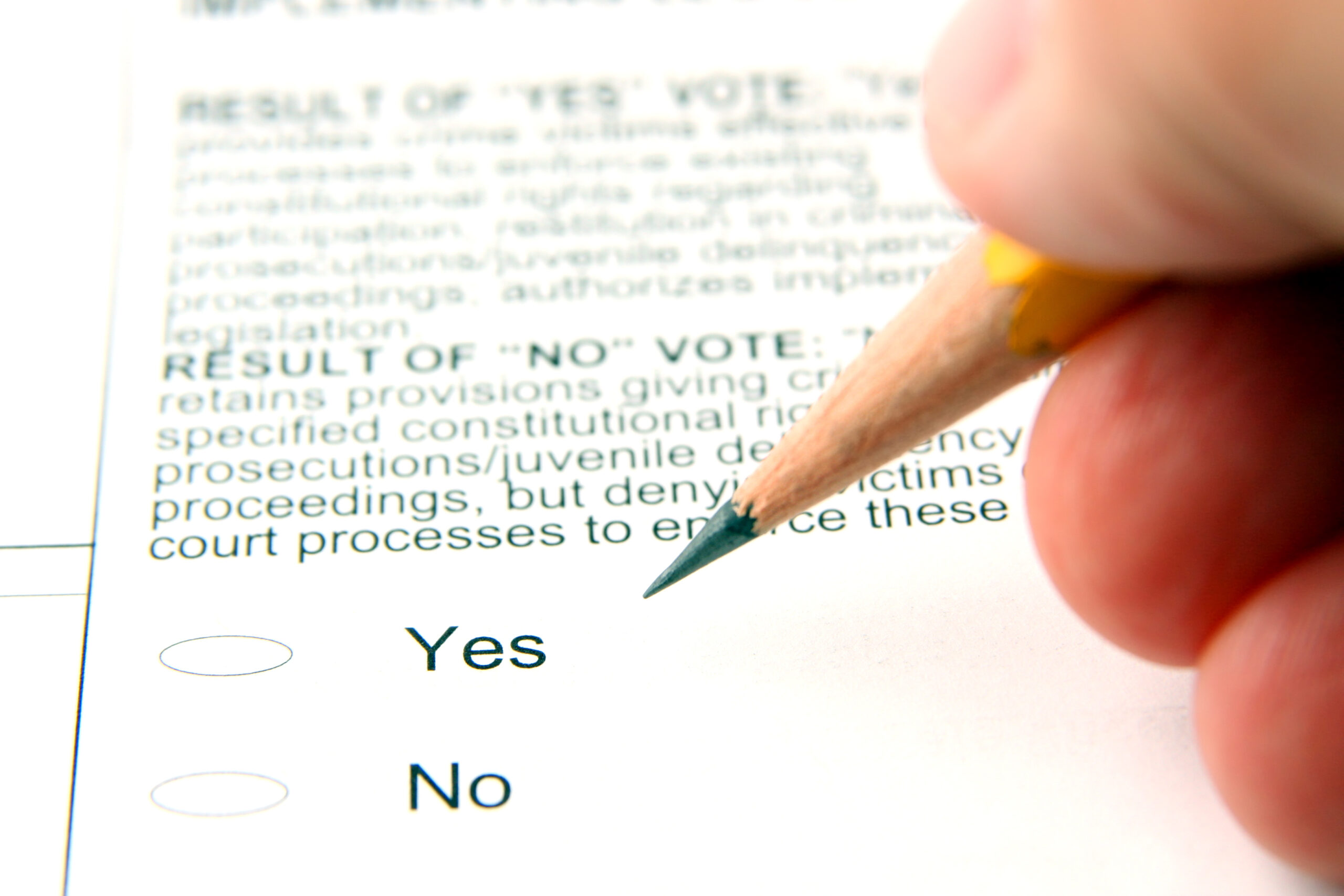
The California Legislature passed Assembly Bill 3121 in September 2020, establishing the Task Force to Study and Develop Reparation Proposals for African Americans. At the beginning of June 2022, the California Reparations Task Force issued an interim report.
The Legislature charged the California Reparations Task Force with “studying the institution of slavery and its lingering negative effects on living African Americans, including descendants of persons enslaved in the United States and on society. Additionally, the Task Force will recommend appropriate remedies of compensation, rehabilitation, and restitution for African Americans, with a special consideration for descendants of persons enslaved in the United States.”
The Findings of the California Reparations Task Force
Portions from the California Reparations Task Force’s Executive Summary (citations with summary) highlighted below identified 12 “specific areas of systemic discrimination”:
- Enslavement
- The United States built one of the world’s largest and most profitable enslaved labor economies.
- The United States adopted a national constitution that protected slavery.
- After the Civil War, the federal government failed to protect the rights and lives of African Americans.
- In 1852, California’s state government passed and enforced a fugitive state law that was harsher than the federal fugitive state law.
- Racial Terror
- After slavery, white Americans, frequently aided by the government, carried out acts of violence and intimidation against African Americans for decades.
- Racial terror targeted at successful African Americans has contributed to the present wealth gap between Black and white Americans.
- The KKK began a presence in California in the 1920s, peaked in the 1940s, and held numerous prominent positions in government at all levels and police departments.
- Political Disenfranchisement
- The federal, state, and local governments of the United States have suppressed and continue to suppress Black votes and Black political power.
- Once federal troops withdrew from the South during the 1876 presidential election, Southern states then willfully ignored the voting protections in the U.S. Constitution.
- From 1901 through the 1970s, not a single African American served in Congress.
- California did not allow Black men to vote until 1879 and passed many voter suppression laws used in the South.
- Housing Segregation
- Government actors, working with private individuals, actively segregated America into Black and white neighborhoods.
- American federal, state, and local municipal governments expanded and solidified segregation efforts through zoning ordinances, slum clearance policies, construction of parks and freeways through Black neighborhoods, and public housing siting decisions.
- Better jobs, tax dollars, municipal services, healthy environments, good schools, access to health care, and grocery stores have followed white residents to the suburbs.
- California state agencies demolished thriving black neighborhoods in the name of urban renewal and park construction. For example, San Francisco destroyed the Fillmore, the city’s most prominent Black neighborhood and business district, closing 883 businesses, 4,729 households, and 2,500 Victorian homes, impacting nearly 20,000 people.
- Separate and Unequal Education
- Slave states denied education to nearly all enslaved people.
- Black teachers received lower wages, and Black children received fewer months of schooling per year and fewer years per lifetime.
- Schooling segregation continued when the government sanctioned housing segregation combined with school assignments.
- In the vast majority of California school districts, schools either re-segregated or were never integrated, and thus segregated schools persist today. California remains the sixth most segregated state in the country for Black students.
- Racism in Environment and Infrastructure
- Segregated Black neighborhoods have more exposure to hazardous waste, oil and gas production, and automobile fumes. They are more likely to have inadequate public services.
- The town of Lanara, formed by Black families, had no running water until the 1970s.
- Black Californians are more likely than white Californians to live in overcrowded housing and near hazardous waste.
- Pathologizing the Black family
- After the Civil War, southern state governments re-enslave children by making them “apprentices” and forcing them to labor for white Americans.
- Government-issued financial assistance has excluded African Americans from receiving benefits, including excluding Black low-income single mothers from support payments in the early 1900s, despite their greater need.
- As of 2019, Black children made up only 14% of American children, yet 23% of children in foster care.
- A 2015 study ranked California among the five worst states in foster care racial disparities, with Black children making up approximately 22% of the foster population, while only 6% of the general child population.
- Control over Creative Cultural and Intellectual Life
- After the Civil War, governments and politicians embraced minstrelsy, the widespread racist and stereotypical depiction of African Americans through song, dance, and film.
- State governments built monuments to memorialize the Confederacy as just and heroic through monument building while simultaneously suppressing the nation’s history of racism, slavery, and genocide.
- Local California governments have discriminated against Black students for their fashion, hairstyle, and appearance. Museums have excluded Black art. California has criminalized Black rap artists as courts have allowed rap lyrics to be used as evidence of street gang activity.
- Stolen Labor and Hindered Opportunity
- In 1913, President Wilson segregated much of the Federal workforce, and African Americans have historically been paid less for Military service.
- Approximately 85% of all Black workers in the U.S. were excluded from the Fair Labor Standards Act of 1938-protections such as a federal minimum wage, maximum hours, overtime pay, and child labor limits.
- Today, California’s two major industries, Hollywood and Silicon Valley, disproportionately employ fewer African Americans.
- An Unjust Legal System
- American government at all levels criminalized African Americans for social control and to maintain an economy based on exploited Black labor.
- The American criminal justice system physically harms, imprisons, and kills African Americans more than any other racial group relative to their population percentage.
- California stops, shoots, kills, and imprisons more African Americans than their share of the population.
- Mental and Physical Harm and Neglect
- Compared to white Americans, African Americans live shorter lives. They are more likely to suffer and die from nearly all known diseased and medical conditions compared to white Americans.
- Research suggests that race-related stress may impact health more than diet, exercise, smoking, or low socioeconomic status.
- African Americans experience anger, anxiety, paranoia, helplessness, hopelessness, frustration, resentment, fear, lowered self-esteem, and lower levels of psychological functioning due to racism.
- The life expectancy of a Black Californian is six years shorter than the state average, and they suffer from higher rates of severe psychological distress, depression, suicidal ideation, and other mental health issues.
- The Wealth Gap
- Government policies have helped white Americans create wealth while creating barriers that prevent African Americans from doing the same.
- When the Federal government created programs that allowed average white Americans to own their homes for the first time, less than 2% of the $120 billion from worth of new housing went to non-white families between 1934 and 1962. Social Security and the G.I. Bill also mostly excluded African Americans.
- In 2019, the median Black household had a net worth of $24,100, while white households had a net worth of $188,200.
- A 2014 Los Angeles Metro Area study found that the median value of liquid assets for native-born African American households was $200, compared to $110,000 for white households.
Preliminary Recommendations from the California Reparations Task Force
The Task Force provided recommendations for future deliberations for each factor, including some below:
- Enslavement
- Require that incarcerated people who are working in prison or jail be paid a fair market rate for their labor
- Prohibit for-profit prison companies from operating within the system
- Allow people who are incarcerated to continue to exercise their right to vote.
- Racial Terror
- Make it easier to hold law enforcement officers and their employing agencies accountable for unlawful harassment and violence.
- Create forms of acknowledgment and remembrance of the trauma of state-sanctioned white supremacist terror.
- Estimate the value of Black-owned businesses and property destroyed or stolen through acts of racial terror, distribute this amount back to Black Californians, and make housing grants, zero-interest business, and housing loans and grants available to Black Californians.
- Political Disenfranchisement
- Create forms of acknowledgment and apology for acts of political disenfranchisement
- Consider legislation to prevent dilution of the Black vote through redistricting.
- Allow individuals with felony convictions to serve on juries and prohibit judges and attorneys from excluding jurors solely for having a criminal record.
- Housing Segregation
- Identify and eliminate anti-Black housing discrimination policies and practices
- Establish a state-subsidized mortgage system that guarantees low-interest rates for qualified California Black mortgage applicants.
- Provide clean and secure housing for vulnerable populations, including those persons who are formerly incarcerated, in the foster care system, and unhoused individuals.
- Separate and Unequal Education
- Provide funding for free tuition to California colleges and universities
- Adopt mandatory teacher credentialing curricula that include culturally responsive pedagogy, anti-bias training, and restorative practices and develop strategies to proactively recruit African American teachers to teach in K-12 public schools.
- Improve funding and educational opportunities for all incarcerated people in juvenile and adult correctional facilities.
- Racism in Environment and Infrastructure
- Require and fund the statewide planting of trees to create shady equity and minimize heat islands in Black neighborhoods.
- Support Black neighborhoods to develop policies and practices that promote locating healthy retailers within Black neighborhoods.
- Reduce the destiny of food swamps (high densities of fast-food restaurants0 in Black neighborhoods.
- Pathologizing Black Families
- Compensate families who were denied familial inheritances by racist anti-miscegenation statutes, laws, or precedents that denied Black heirs resources they would have received had they been white.
- Eliminate past-due child support owed to the government for non-custodial parents.
- Review and adopt policies that caregivers in the child welfare system are allowed to meet the requirements and have access to resources to care for family members.
- Control Over Creative Cultural and Intellectual Life
- Identify and eliminate anti-Black discrimination policies in artistic, cultural, creative, athletic, and intellectual areas.
- Compensate individuals who have been deprived of rightful profits for their artistic, creative, athletic, and intellectual work.
- Identify and eliminate discrimination in art, culture, invention, sports, leisure, and business industries.
- Stolen Labor and Hindered Opportunity
- Remove unnecessary barriers to employment for individuals with criminal records.
- Create a fund to support the development and sustainment of Black-owned businesses and eliminate barriers to licensure that are not strictly necessary and harm Black workers.
- Address disparities in transportation that limit access to jobs.
- An Unjust Legal System
- Eliminate discriminatory policing, particularly killings, use of force, and racial profiling of African Americans.
- Prevent discrimination by algorithms in new policing technologies.
- Eliminate implicit and explicit bias in the criminal justice system, including implementing training and accountability for prosecutors, judges, parole commissioners, and parole and probation officers.
- Mental & Physical Harm and Neglect
- Eliminate anti-Black healthcare laws and policies and anti-Black discrimination in healthcare.
- Create free healthcare programs.
- Identify and eliminate discrimination and systemic racism, including but not limited to discrimination by healthcare providers; inequity in access to healthcare, inaccessibility of health insurance; funding needs of health-focused community organizations, the dearth of clinical research on health conditions that affect African Americans; the underrepresentation of African Americans among medical and mental health providers; and the lack of race-conscious public health policy.
- Identify and eliminate the biases and discriminatory policies that lead to higher maternal injury and death rates among Black women.
- The Wealth Gap
- Implement a detailed program of reparations for African Americans.
- Develop and implement other policies, programs, and measures to close the racial wealth gap in California.
- Provide funding and technical assistance to Black-led and Black community-based land trusts.
- The California African American Freedmen Affairs Agency
- Establish a Cabinet-level Secretary position over an African American/Freedmen Affairs agency tasked with implementing the recommendations of this task force.
The California Reparations Task Force will issue their final report to the Legislature before July 1, 2023.
The full interim report from the California reparations task force is available here.
Latest News
Photo credit: iStock.com/burcu demir The 2024 election brought a major shift in the political landscape, with Republicans making sweeping gains across the country. Former President Donald Trump returned to the White House, winning both the [...]
Photo credit: iStock.com/Svanblar In the 2024 U.S. general elections, voters nationwide will make crucial decisions on 2024 ballot measures alongside selecting their political representatives. These ballot measures allow citizens to directly vote on policy issues [...]
Ever wondered what goes into organizing a U.S. presidential debate? In this episode of Back in Session, Ryan Stevens and Ryan DeMara sit down with Jean Cantrell and Dan Felton, who have served as members of [...]
Photo credit: iStock.com/klenger The 2024 General Election will be a defining moment for both state and national politics across the United States. With control of the White House, Congress, and numerous state legislatures at stake, [...]






Stay In Touch